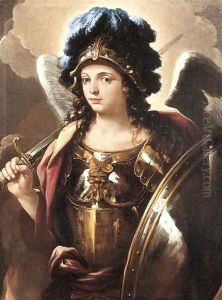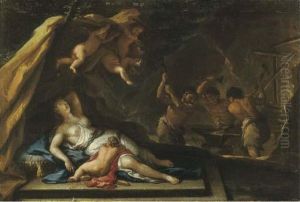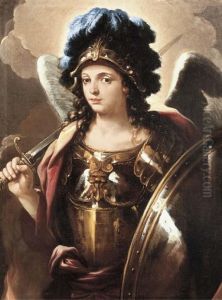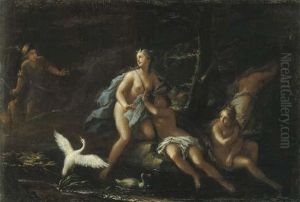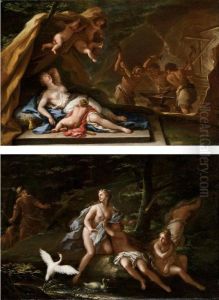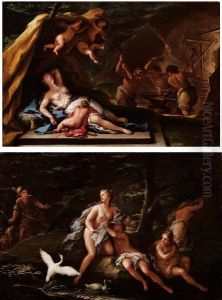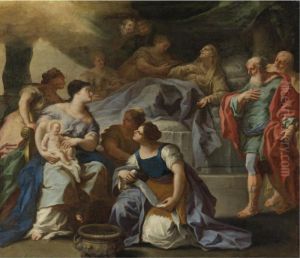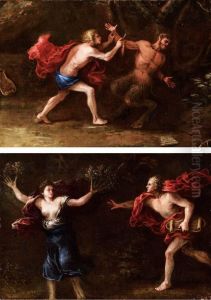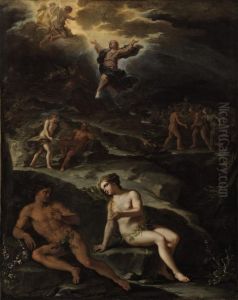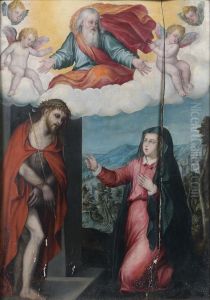Giovan Battista Lama Paintings
Giovan Battista Lama was an Italian painter active during the Baroque period. He was born in 1673 in San Prisco, a small town near Caserta, Italy. Lama is often associated with the Neapolitan school of painting, which was prominent in the region during the 17th and 18th centuries. His style was influenced by the works of the great Baroque masters, and he is known for his religious compositions, frescoes, and altarpieces.
Lama received his initial training from Francesco Solimena, one of the most renowned painters of the Neapolitan Baroque. Under Solimena's guidance, Lama developed a style characterized by dramatic use of light and shadow, as well as a dynamic sense of movement, which were hallmarks of the Baroque aesthetic. He also absorbed the influence of other contemporary artists, such as Luca Giordano and Mattia Preti, both of whom had a significant impact on the development of his style.
Throughout his career, Lama worked on various commissions for churches and other institutions, which included both painting and architectural projects. His works can be found in various locations in Naples and its surrounding areas. Notable works by Lama include the frescoes in the apse of the church of San Ferdinando in Naples and the altarpiece in the Church of Santa Maria di Costantinopoli.
Despite his active role in the Neapolitan art scene, Giovan Battista Lama is not as widely known as some of his contemporaries. His works, however, reflect the vitality and the religious fervor of the Baroque period in Southern Italy. His paintings are marked by their expressive figures, rich colors, and dramatic compositions.
Lama's contributions to the arts continued until his death in 1748. While his name may not resonate as loudly as some of the era's giants, his body of work remains an important part of the Baroque legacy in Italy, offering insight into the artistic movements and cultural context of his time.
